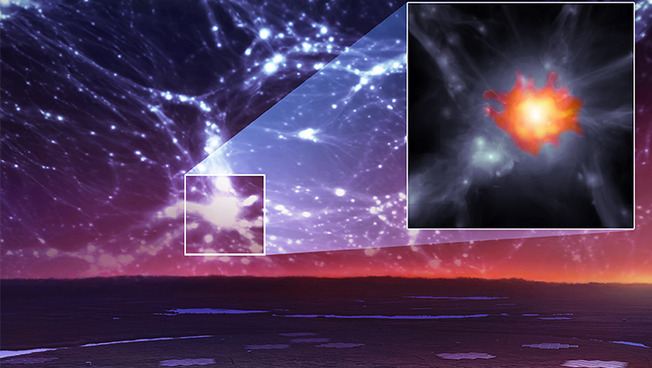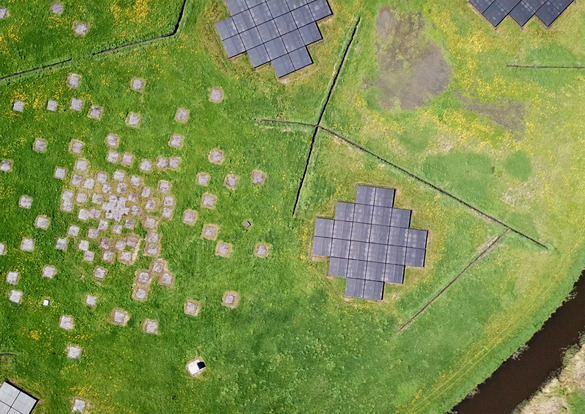28 September 2022
Gigantic Radio Sources Discovered in the Universe—Up to 10 Million Light Years in Size

Photo: ASTRON/Cuciti/Vazza/Gheller
When viewed from a great distance, mass in the universe is not evenly distributed but resembles a net-like structure referred to as the cosmic web. There are often thousands of galaxies at the nodes of the cosmic web. After the big bang, the collision of such galaxy clusters is considered one of the most powerful astronomical events. During such collisions, tiny charged particles are accelerated almost to the speed of light. This produces radio radiation, which can be measured with special telescopes.
With the help of the world’s largest radio telescope, the Low Frequency Array (LOFAR), an international team led by Dr. Virginia Cuciti of the Hamburg Observatory has now detected 4 galaxy clusters that are surrounded by a shell of weak radio radiation. The research group calls this phenomenon megahalos. They are about 30 times larger than any previously known radio sources. “So we have discovered giant cosmic particle accelerators,” explains Dr. Cuciti, lead author of the study and an Alexander von Humboldt scholarship holder at Universität Hamburg.
“There is a high probability that the 4 megahalos discovered are just the tip of the iceberg of a widespread cosmological phenomenon and that future observations will unearth more megahalos,” Dr. Cuciti says. “This also means that further observations could reveal megahalos in many more galaxy clusters,” adds Prof. Dr. Marcus Brüggen, coauthor of the study. Megahalos suggest that most parts of the universe are filled with ultrafast electrons and magnetic fields and that there must be a mechanism to accelerate these electrons very efficiently.
LOFAR is a Europe-wide network of radio antennae, the core of which is located in the Netherlands. The telescope can detect low-frequency radio waves in the 10–240 MHz range. It is operated by the Netherlands Institute for Radio Astronomy (ASTRON). France, Germany, Ireland, Italy, Latvia, Poland, Sweden, Bulgaria, and the United Kingdom are partner countries.
LOFAR is currently undergoing a major upgrade to increase its sensitivity. This upgrade will enable researchers to explore the radio waves of the universe in unprecedented ways and to discover more megahalos.



